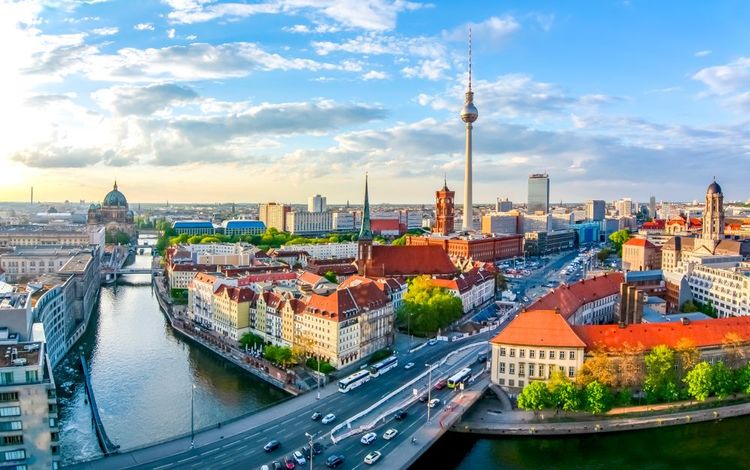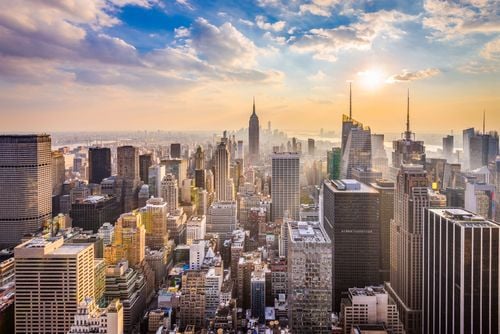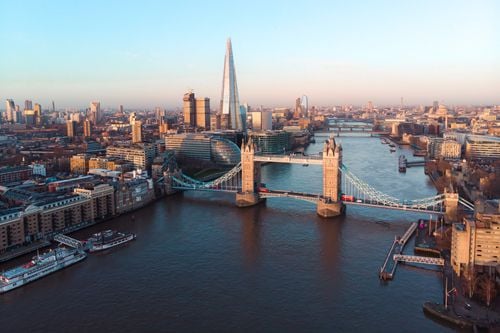In 1999, after extensive discussions, the German parliament decided to create a central memorial, the Memorial to the Murdered Jews of Europe, also called the Holocaust Memorial. The design of this memorial was the result of a competition, which was won by New York architect Peter Eisenman. The memorial was officially inaugurated in 2005. Covering an area of 19,000 square metres, Eisenman placed 2,711 concrete steles of varying heights on the site. This open space is accessible day and night, and from any direction, visitors can fully immerse themselves in its unique spatial layout. The memorial, situated on a gradual slope, takes the form of a wave that appears differently depending on where you stand. The irregularities of the concrete floor often provoke a feeling of vertigo or uncertainty in many visitors. Its design intentionally encourages openness and abstractness, offering individuals the chance to approach the subject in a deeply personal way. The scale of the installation, combined with the absence of a central point of commemoration, challenges the conventional concept of a memorial, and creates a place of remembrance that diverges from the usual approach. The Memorial to the Murdered Jews of Europe is a space that encourages reflection and contemplation in a distinct and thought-provoking way.
In the very heart of Berlin, Germany’s capital, stands the Memorial to the Murdered Jews of Europe, also called the Holocaust Memorial, offering a place of remembrance. Close to the Brandenburg Gate, its central location provides a space to learn about the horrific history of the Holocaust and to mourn the six million Jews that died during the course of the Second World War. The memorial is composed of a field of steles and of an underground designed by Eisenman. In this underground space, you will find information about the victims and locations in the different themed rooms such as the Room of Dimensions, the Room of Families, the Room of Names and the Room of Sites. Photographs and film footage are displayed on site to show the different sites of persecution and mass murders.
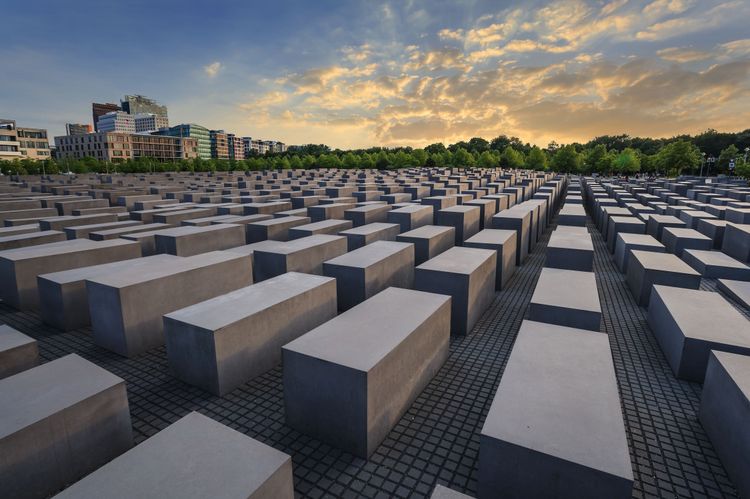
The Holocaust Memorial
- © Noppasin Wongchum / ShutterstockThe memorial’s history
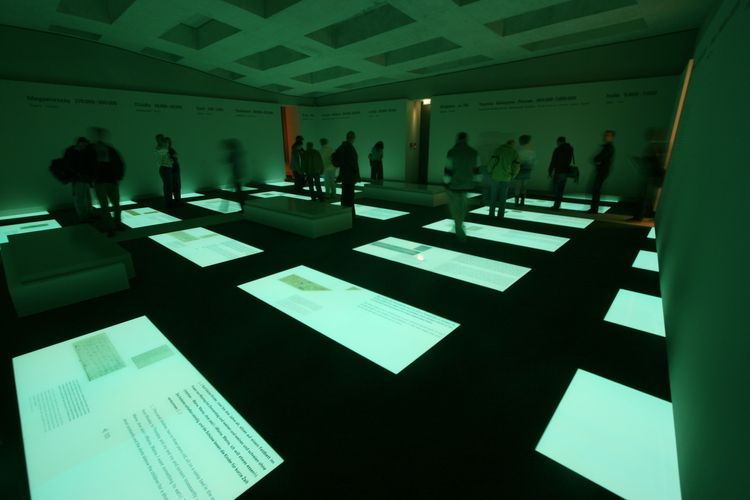
The interior of the Holocaust Memorial
- © J. Helgason / ShutterstockHolocaust memorials in Berlin
Sinti and Roma Memorial
In October 2012, a memorial was built south of the Reichstag to honour the memory of the Sinti and Roma victims of the genocide, also known as Porajmos, under the National Socialist regime. During the Holocaust, around 500,000 Sinti and Roma were persecuted and killed under the Nazi regime. Artist Dani Karavan designed the memorial, which features a circular pool of water with a triangular stone stele at its centre. The shape of this stone symbolises the way in which Nazi prisoners were distinguished by triangles of different colours on their uniforms. To signify life and pay tribute to the Sinti and Roma who died, a flower decorates the stone. When the flower fades, it sinks into the depths of the pit, but a new flower emerges from the water, symbolising renewal. Around the water basin, lines from the poem "Auschwitz" by the Italian-Romani poet Santino Spinello are inscribed in English, German and Romani. These powerful words describe the horrific experiences of the genocide: "Sunken face / extinguished eyes / cold lips / silence / torn heart / no breath / no words / no tears".
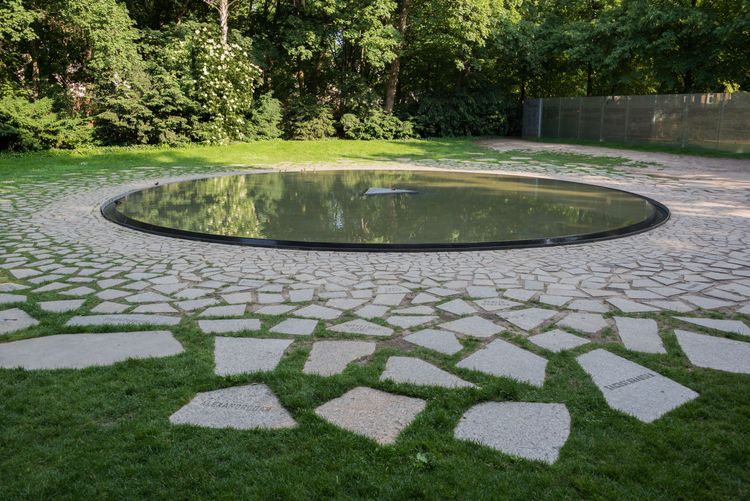
Sinti and Roma Memorial
- © imeduard / ShutterstockA memorial to persecuted minorities located in Tiergarten
Located in Tiergarten, the memorial is a poignant reminder of the suffering inflicted on gay men and women by the Nazi regime. Unlike traditional memorials, this unique cube incorporates a video screen inside, offering a creative and insightful approach to the topic. The idea for the memorial arose from discussions sparked by the opening of the Memorial to the Murdered Jews of Europe. In response, the German parliament decided to create a monument dedicated to persecuted homosexuals in 2003. The project, conceived by Scandinavian artists Michael Elmgreen and Ingar Dragset, uses film as a medium to establish a link with the present and showcase the subject in an original way. The memorial was officially inaugurated on 27 May 2008. The main feature of this concrete cube, 3.60 metres high and 1.90 metres wide, is a small square window on the outside. Through this window, visitors can watch a looped video depicting a homosexual love scene. The film is changed regularly to maintain the memorial's impact. In addition, a commemorative plaque provides information both in German and in English. This monument recalls the dark days when various minority groups were persecuted by the Nazi regime. Gay men and women, in particular, faced enormous hardship and oppression. As early as 1935, the penal code was changed and Article 175 criminalised public displays of affection between people of the same sex, resulting in imprisonment or confinement. Many were castrated and around 50,000 convictions were handed down. Lesbians were also persecuted by the Nazis as anti-social elements, and both gay men and lesbians were forced to wear pink and black triangles, respectively, in the concentration camps. The monument dedicated to homosexuals persecuted by the Nazi regime is a powerful symbol against intolerance, discrimination and persecution worldwide. It is a testament to the importance of remembering and learning from the past to promote a more inclusive and caring future.
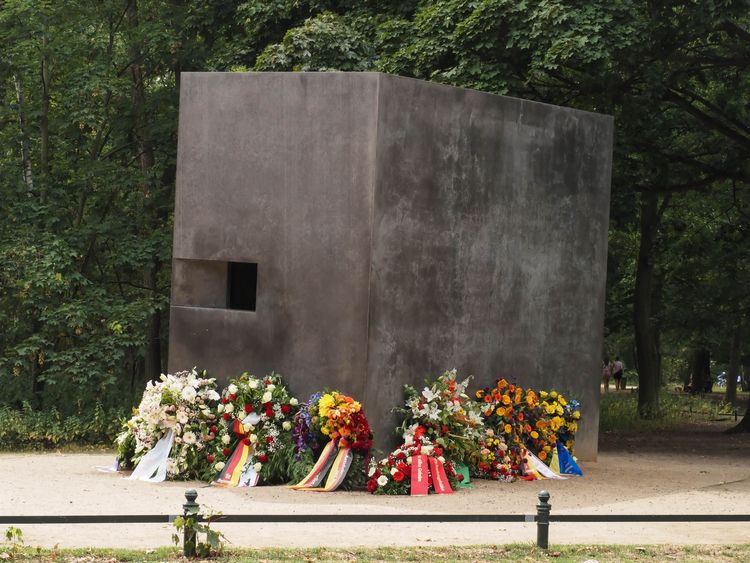
Memorial for the homosexuals persecuted by the Nazi regime
- © aushilfe444 / ShutterstockPractical information about your visit
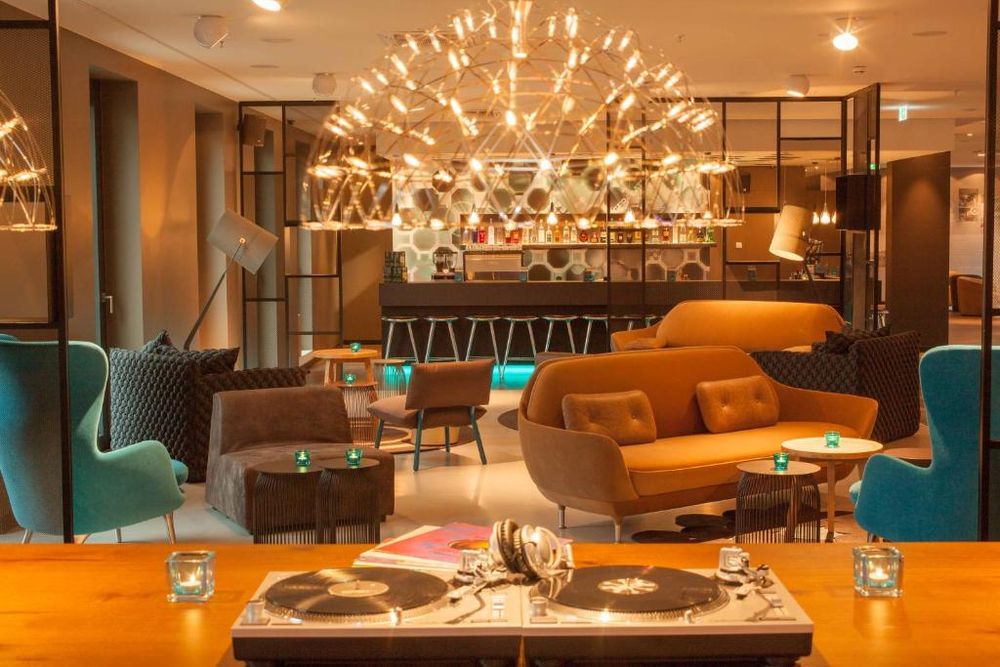 Berlin
Berlin
Motel One Berlin-Potsdamer Platz
The Motel One Berlin-Potsdamer Platz is located in the Mitte district, just 200 metres from the famous Potsdamer Platz. The hotel features a garden, terrace and free Wi-Fi.Opening hours:
Field of steles: always accessible
Information centre located under the field of stelae (can be accessed with an elevator for people with reduced mobility): Tuesday to Sunday: 10am - 6pm
Last admission 45 minutes before closing time
Price:
Admission to the memorial is free.
How to get to the Holocaust Memorial?
By car:
- If you prefer driving, you can rent a car or use a taxi service to get to the Holocaust Memorial. But, keep in mind that traffic and parking might be challenging.
By bus:
- Berlin has an extensive public transportation network, including buses! You can take a bus to go directly from your accommodation to the Holocaust Memorial.
By subway:
- The subway (U-Bahn) in Berlin can take you to the memorial. Stop at the S+U Brandenburger Tor station.
Some things to keep in mind for your visit:
- When organising your visit, please take into account that there may be long waiting times for entry.
- Plan out at least an hour to properly visit the site and the exhibition.
Useful Link
Berlin's official travel website:
https://www.visitberlin.de/en/memorial-murdered-jews-europe/?utm_source=easyvoyage
